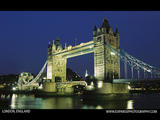 London is the capital and largest urban area of England and the United Kingdom. An important settlement for two millennium, London's history goes back to its founding by the Romans. Since its settlement, London has been part of many movements and phenomena throughout history, including the English Renaissance, the Industrial Revolution, and the Gothic Revival. The city's core, the ancient City of London, still retains its limited medieval boundaries; but since at least the 19th century the name "London" has also referred to the whole metropolis that has developed around it. Today the bulk of this conurbation forms the London region of England and the Greater London administrative area, with its own elected mayor and assembly.
London is the capital and largest urban area of England and the United Kingdom. An important settlement for two millennium, London's history goes back to its founding by the Romans. Since its settlement, London has been part of many movements and phenomena throughout history, including the English Renaissance, the Industrial Revolution, and the Gothic Revival. The city's core, the ancient City of London, still retains its limited medieval boundaries; but since at least the 19th century the name "London" has also referred to the whole metropolis that has developed around it. Today the bulk of this conurbation forms the London region of England and the Greater London administrative area, with its own elected mayor and assembly.London is one of the world's leading business, financial and cultural centers, and its influence in politics, education, entertainment, media, fashion and the arts contribute to its status as a major global city. London boasts four World Heritage Sites: The Palace of Westminster, Westminster Abbey and St. Margaret's Church; the Tower of London; the historic settlement of Greenwich; and the Royal Botanic Gardens, Kew. The city is a major tourist destination both for domestic and overseas visitors.

London can be geographically defined in a number of ways, although the situation was once even more ambiguous than it is now and open to periodic legal debate. At London's core is the small, ancient City of London which is commonly known as 'the City' or 'the Square Mile'. London's metropolitan area grew considerably during the Victorian era and again during the Interwar period, but expansion halted in the 1940s because of World War II and Green Belt legislation, and the area has been largely static since. The London region of England, also commonly known as Greater London, is the area administered by the Greater London Authority. The urban sprawl of the conurbation—or Greater London Urban Area—covers a roughly similar area, with a slightly larger population. Beyond this is the vast London commuter belt.
 London is too diverse to be characterized by any particular architectural style, having accumulated its buildings over a long period of time and drawn on a wide range of influences. It is, however, mainly brick built, most commonly the yellow London stock brick or a warm orange-red variety, often decorated with carvings and white plaster moldings. Many grand houses and public buildings (such as the National Gallery) are constructed from Portland stone. Some areas of the city, particularly those just west of the center, are characterized by white stucco or whitewashed buildings. Few structures pre-date the Great Fire of 1666, except for a few trace Roman remains, the Tower of London and a few scattered Tudor survivors in the City. Most buildings in London date from the Edwardian or Victorian periods. The disused (but soon to be rejuvenated) 1939 Battersea Power Station by the river in the south-west is a local landmark, while some railway termini are excellent examples of Victorian architecture, most notably St Pancras and Paddington (at least internally).
London is too diverse to be characterized by any particular architectural style, having accumulated its buildings over a long period of time and drawn on a wide range of influences. It is, however, mainly brick built, most commonly the yellow London stock brick or a warm orange-red variety, often decorated with carvings and white plaster moldings. Many grand houses and public buildings (such as the National Gallery) are constructed from Portland stone. Some areas of the city, particularly those just west of the center, are characterized by white stucco or whitewashed buildings. Few structures pre-date the Great Fire of 1666, except for a few trace Roman remains, the Tower of London and a few scattered Tudor survivors in the City. Most buildings in London date from the Edwardian or Victorian periods. The disused (but soon to be rejuvenated) 1939 Battersea Power Station by the river in the south-west is a local landmark, while some railway termini are excellent examples of Victorian architecture, most notably St Pancras and Paddington (at least internally).

































No comments:
Post a Comment